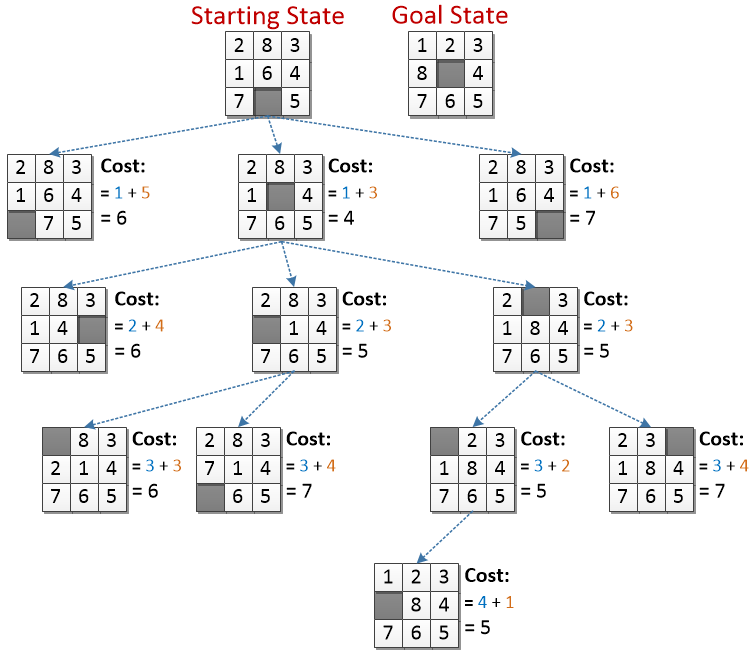Solving an Eight Puzzle¶
To get a better sense of how heuristic search works, and to see how this same process can be used to solve other kinds of problems, we are going to solve the eight puzzle. In this puzzle, you have 8 squares in a 3x3 grid with one open square. You make moves by sliding a piece that is next to the empty square into the gap. The goal is to rearrange the 8 pieces into a particular picture or pattern.
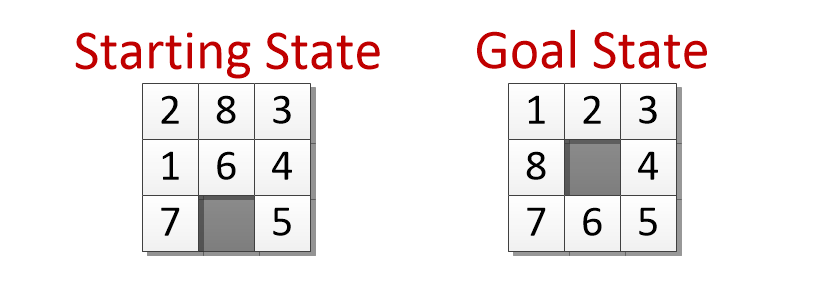
To guide our search we need to come up with a heuristic - something that does a pretty good job of estimating the amount of work that remains. Since each move can only move one piece, if there are 4 pieces out of position, we know there are at least 4 more moves to go. That suggests we can at any point look at a board and estimate the remaining work by counting up the number of pieces that are not in the right place according to the goal. If we add that estimate of future work to the amount of work it takes to get to any state, we can estimate how much work the total path to the goal will be if we go through that state.
\(\textrm{estimated cost} = \textrm{moves so far } + \textrm{ pieces still out of place}\)
When we pick a state to explore next we will always choose the one with the smallest estimated total cost.
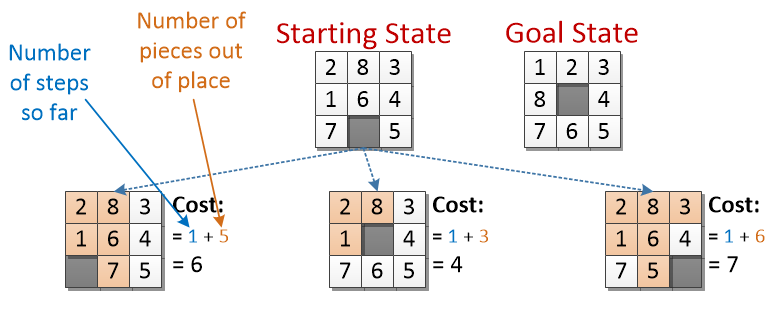
Here are the 3 possible first moves from the starting position. Each new state is assigned a cost based on A) how many moves it took to get there and B) how many pieces are still out of place in comparison to the goal.
Note that the empty location does not count as an “out of place” piece
The middle square has the lowest estimated cost, so we will explore it next.
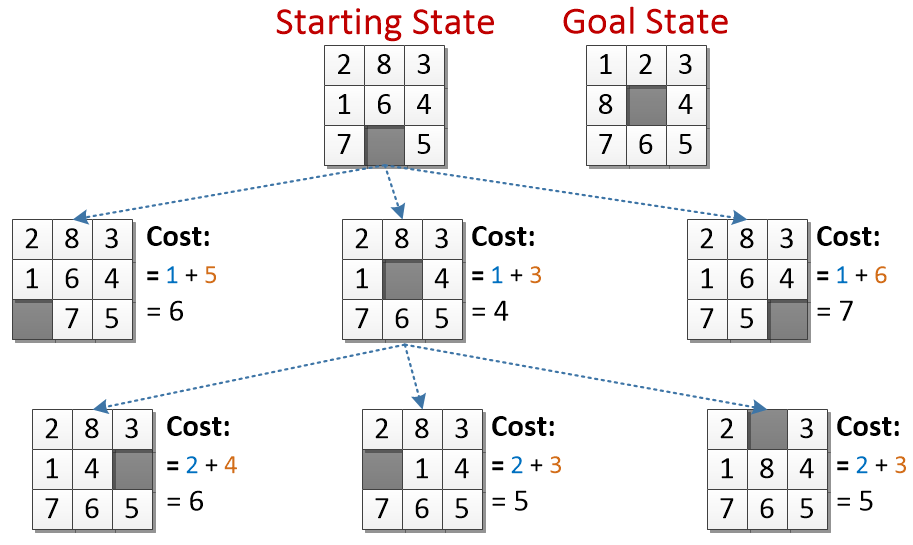
Each of these states took two moves to reach (from the starting state) - that number is reflected in their cost.
Note that we could have slid the 6 back up to the middle, but that would get us back to the same board as the starting state but having used two moves. There is no reason we would want to do that… so we are omitting that move. In general, if a move would produce a board we have already seen how to make with fewer moves we will ignore it.
Two of the new states have a cost of 5. We have three other states with a projected cost of 6, but there is no reason to worry about them until we have explored the cost 5 ones. Since we don’t have any other tiebreaker, we will randomly select the leftmost one to explore.

Now we are three steps from the start - both of the new states have a cost of 3 + pieces out of position. (Theoretically, there are three moves we could have made, but moving the 1 back to the left side gets us right back to a board we have already seen, so once again we are ignoring it.)
Exploring that square did not produce anything more promising looking that the state with an estimated cost of 5. We will ignore all of the 6’s and 7’s for now and go back to look at the other 5.
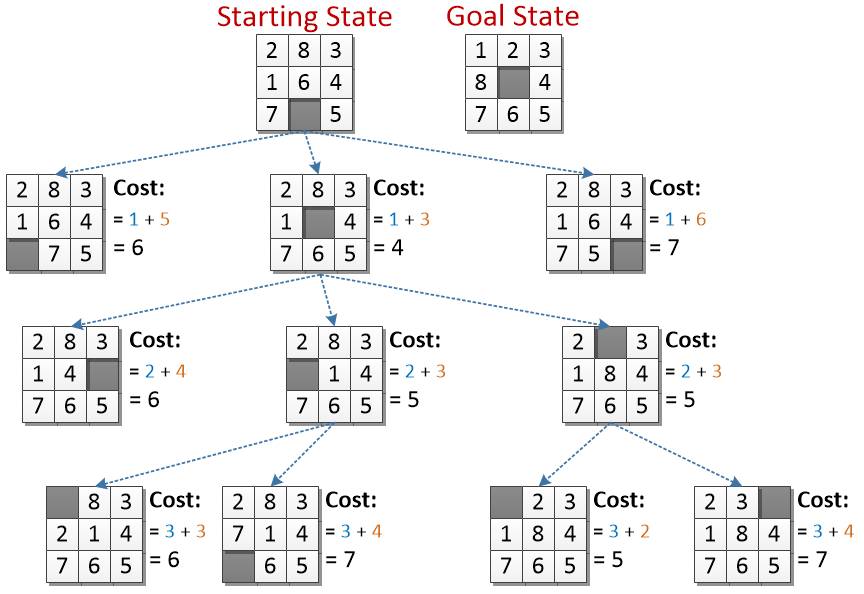
Two new states. These are both 3 moves from the starting state.
The new one with a cost of 5 is the best looking option we have, we will explore it next.

